This morning we walked up the road from the campsite to the Illecillewaet trailhead and walked down the 1884 trail a little way until we reached the ruins of Glacier House. This had been a grand hotel, patronised by the wealthy passengers of the Canadian Pacific Railway for many years. Glacier House started life as a dining room, providing food for the passengers on a section of track where dining cars were too heavy to haul up the hill. It grew from there into a luxury hotel, and was the inspiration for Chateau Lake Louise.
Parks Canada explains the end of the story better than I can:
The end of the line
After thirty years of defending the line against avalanches, heavy snowfall, forest and structural fires and mudslides, the Canadian Pacific Railway Company finally gave up on Rogers Pass. A massive avalanche on March 4, 1910, had killed 58 railway workers who were clearing the site of an earlier slide that had plummeted down the opposite side of the valley. Everyone except one member of the engine crew was killed. This disaster had occurred only 3 days after an avalanche in the Cascade Range in Washington State had swept two trains into a canyon and killed 96 people. These terrible accidents and a history of avalanche deaths in the pass pushed the company to a final decision on a long-planned tunnel. The surface route over the pass was abandoned in 1917 after the 9 km long Connaught Tunnel reduced the avalanche risk, eliminated many of the snowsheds and pared down the rail grade over the pass.
Despite the loss of direct rail service, Glacier House stayed open for another decade. Guests bound for the resort were met by horse-drawn coaches near the tunnel entrance for the short trip on the abandoned rail line. Without the immediacy of the railway at the front door, however, visitation began to decline steadily. With the Great Glacier receding, the resort's greatest attraction was disappearing from view. Glacier House was overshadowed by the Banff Springs Hotel and the Chateau Lake Louise, and the 1925 season was to be the last for Glacier House.[1]
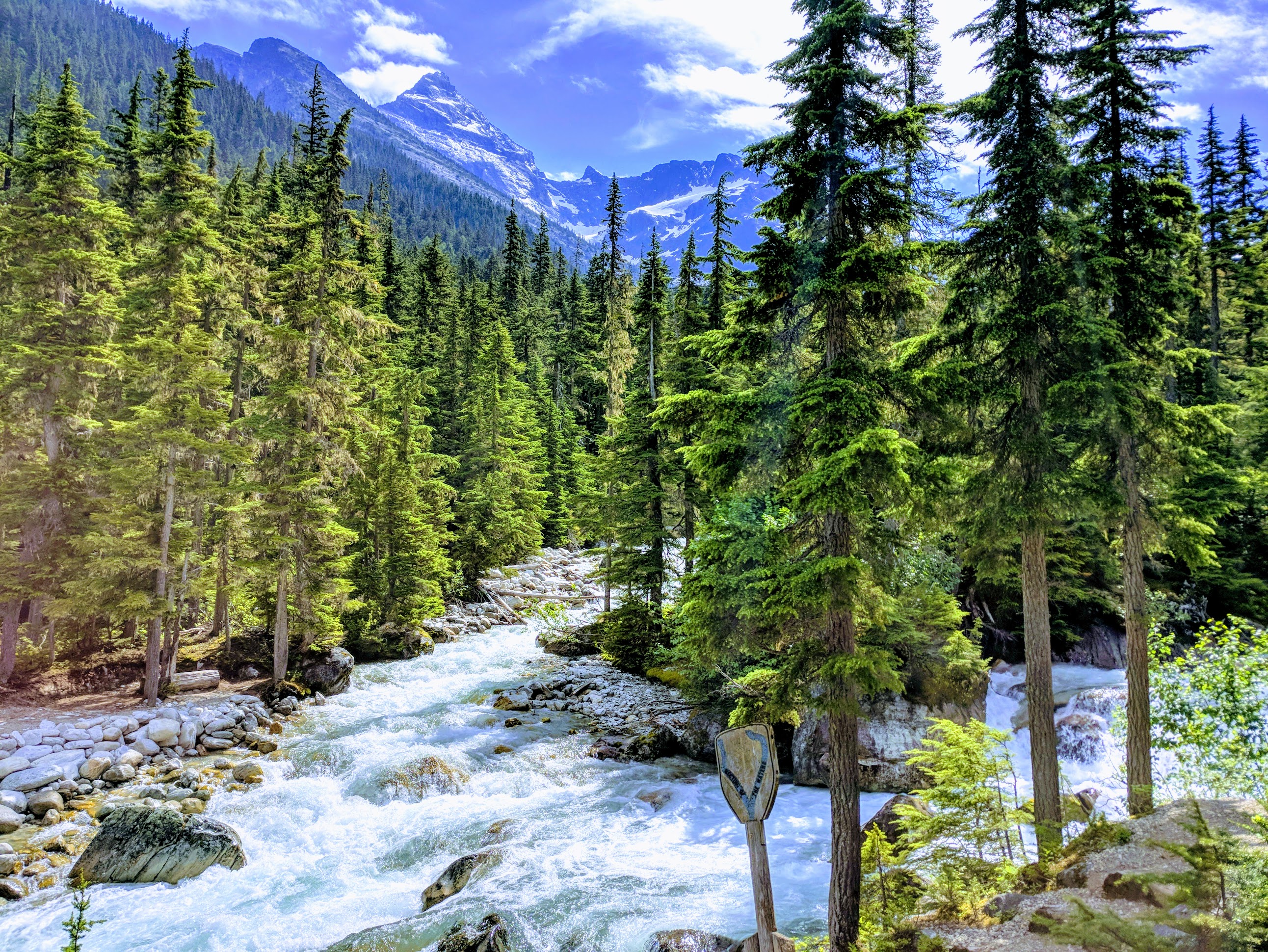
Walking past the hotel ruins for a few minutes we came to the Meeting of the Waters. This is the point where the Asulkan Brook (fed by the Asulkan glacier and friends a few km south) joins the Illecillewaet River (itself fed from the Illecillewaet glacier). We sat on some Parks Canada Red Chairs and enjoyed watching the pastel blue river roar past. On our way back to the camp we saw lots of signs of bear activity, mainly soft tree stumps ripped apart as they were hunting for bugs.
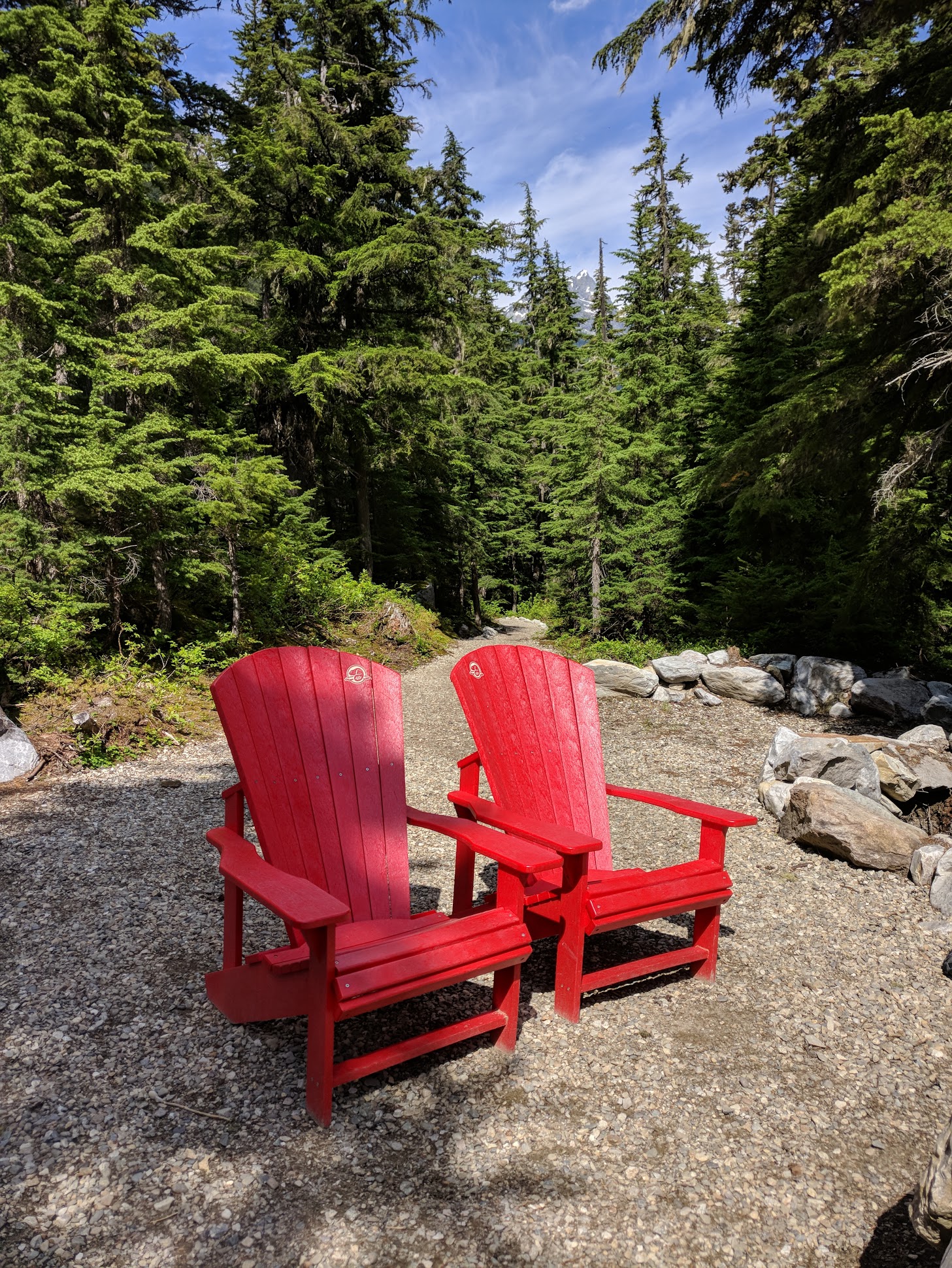
We packed up camp and drove onward to Yoho national park, where the day took a turn for the worse. We had been planning to stay two nights in the first-come-first-served Kicking Horse campsite but arrived to find it closed due to hazards relating to avalanche debris. The next door Monarch campsite was open but had no running water, and as we had spent the last two nights in the shower-less Illecillewaet Campground we were looking for somewhere we could get properly clean. We sat on the side of the road for half an hour, fruitlessly searching for campsites, hotels, or motels with any availability. We briefly considered staying a night at the Chateau Lake Louise (for $800), but at the last minute, Katie found a room at the Kicking Horse Hostel 45 minutes back up the road in Golden.
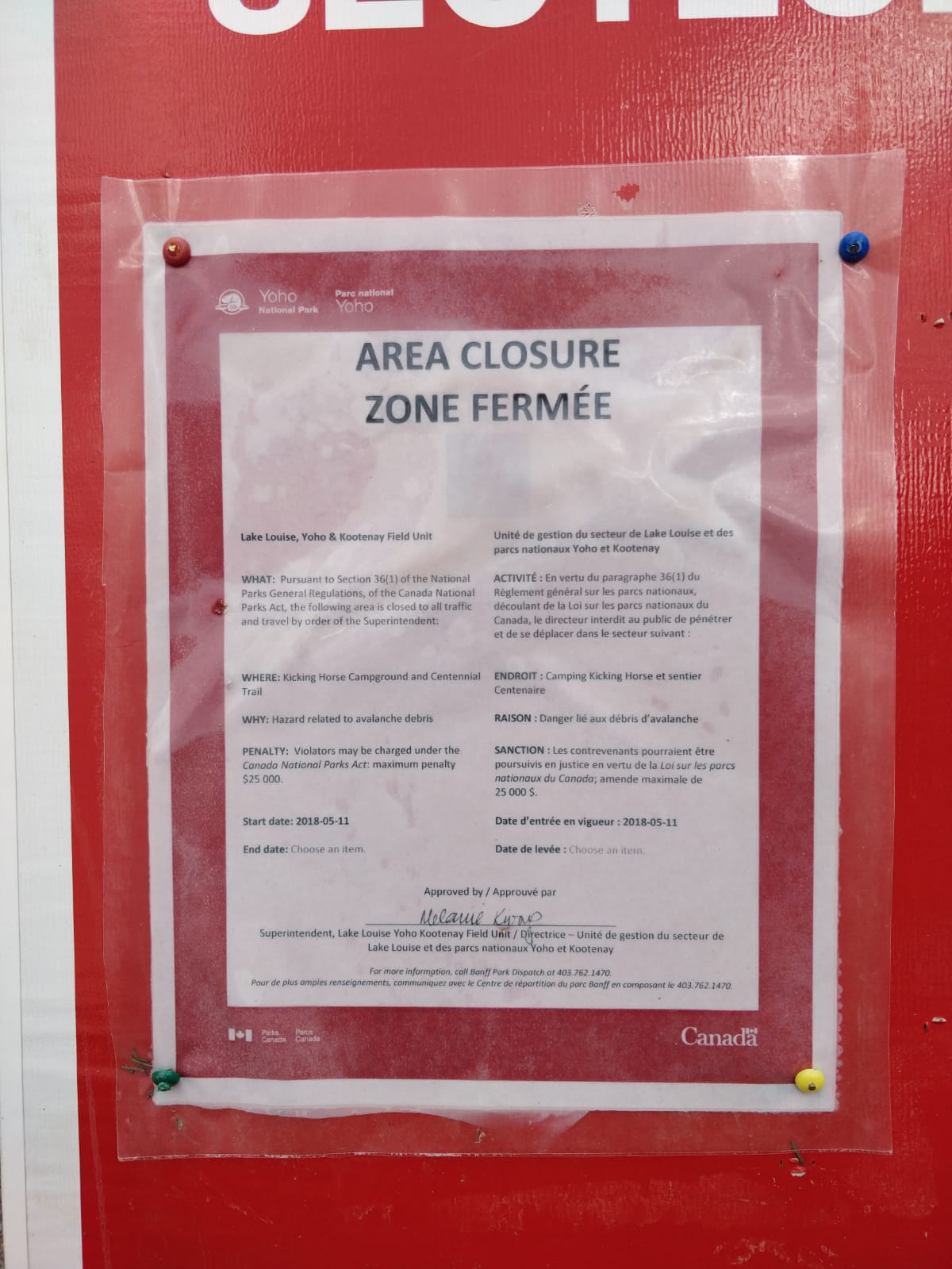
We began heading back in that direction and stopped for lunch at a small railway town called Field. We ate at the Siding Cafe which was an interesting little place, full of trinkets and curios for sale, and also doubling as the town's liquor store. We ordered a panini to share, but through some mixup, it was delivered to a different table, so they gave us that table's meal for free along with a new panini of the type we'd ordered.
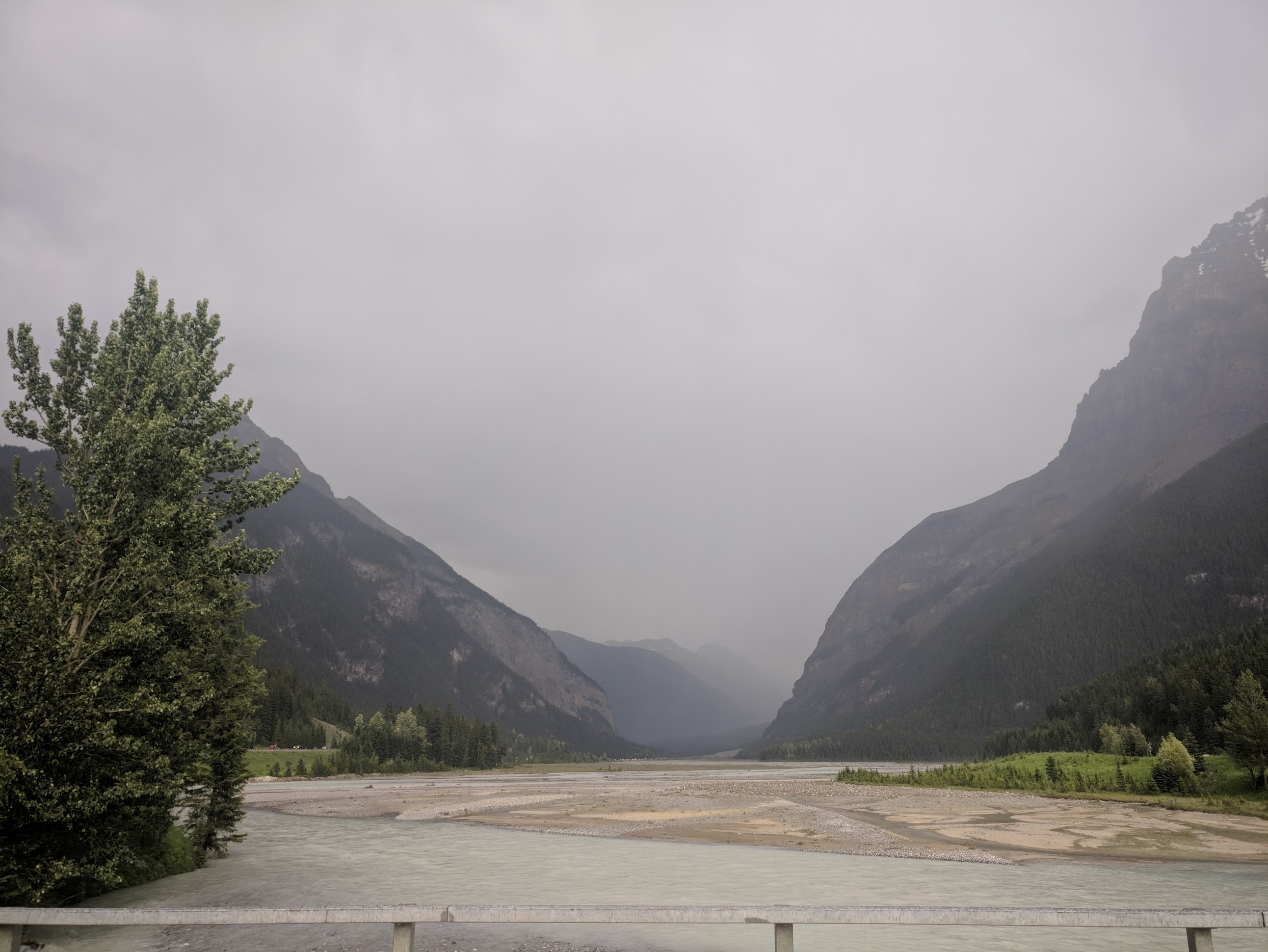
While we were sitting at the cafe, we watched a thick dark thunderstorm roll in along the valley. The wind suddenly picked up, and the building was pelted with huge raindrops. As the lightning flashed and the thunder boomed and echoed around the mountains, we considered that perhaps the campsite being closed was a blessing in disguise.
On our way back to Golden, we stopped at a couple of sightseeing landmarks. Natural Bridge is an impressive natural rock formation that spans the flow of the Kicking Horse River west of Field, where the slower-moving waters from the Field valley flats begin their descent through a canyon to be joined by the Amiskwi River. This section of the river is actively cutting down its bed, due to a solution of limestone in the water mixed with sand and gravel acting as an abrasive. The river once flowed over these rocks as a waterfall, but over time has worn its way through the rocks to create a natural arch which the river now flows underneath.
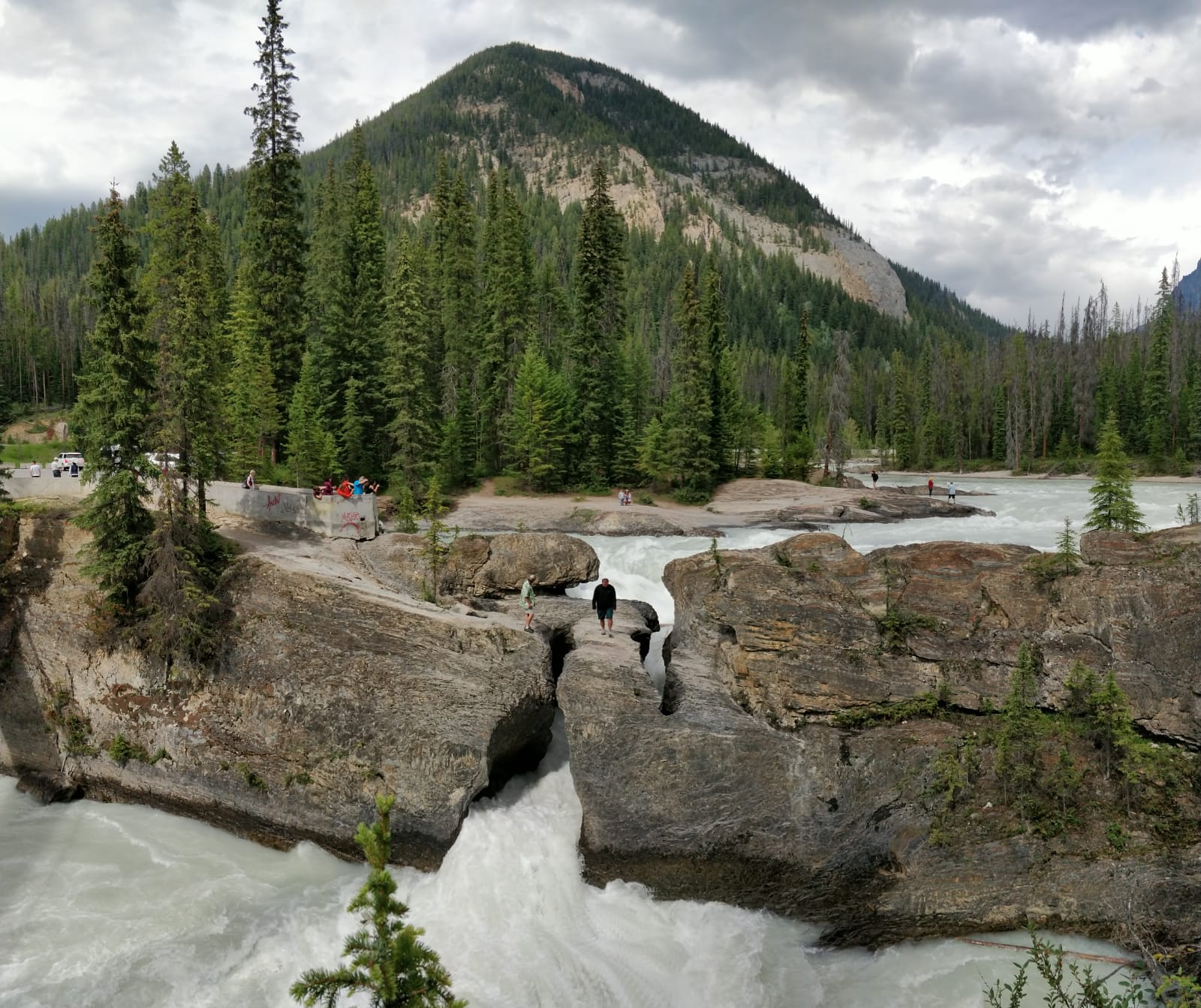
Emerald Lake is the largest of Yoho's 61 lakes and is one of the park's premier tourist attractions. The lake is a vivid turquoise colour, caused by powdered limestone washed down into it from the glaciers and snowmelt rivers in the surrounding mountains. There were huge crowds of people here, all jockeying for position at the edge of the lake to take selfies, or to pose for group photos.
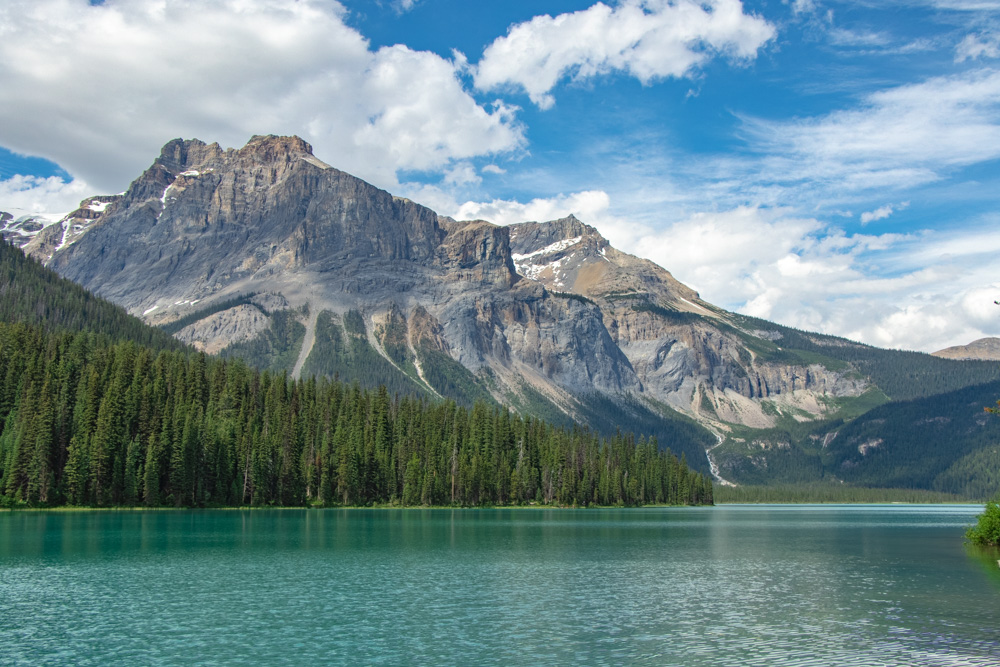
We eventually found the Kicking Horse Hostel, down a little back road next to the train tracks, but the manager was away taking a previous guest to Lake Louise so we headed into downtown Golden to find the local Whitetooth Brewing Company. While we sampled their seasonal brews, we got chatting to a retired couple who were also on a camping trip through the Rockies. They gave us some tips on cool places to see, and generously handed over a few of the local maps they'd collected.
Back at the hostel, we met the manager, an energetic Scotish woman named Tanya. She showed us to a room in the attic with a double bed, a welcome upgrade from the two singles we'd booked. This had apparently been her room, but she had decided to rent out every room in the house and so was now sleeping outside in a half-constructed campervan. The whole place was very ramshackle and custom built; the main door to the house was a mesh screen that had been constructed from unpainted wood to fit into the tracks of an absent ranch slider, and the door to our room had been built from some scraps of wood and builders paper. The train track was literally across the road from us, and through the night several trains stopped and started outside. The clanks and bangs of the carriages bumping into each other, and taking up slack as they started moving, were so deep and loud that the whole house shook. Nonetheless, the bed was comfy, and the shower was warm.
